Michel Gassier quietly revolutionizes wine making in the Southern Rhône.
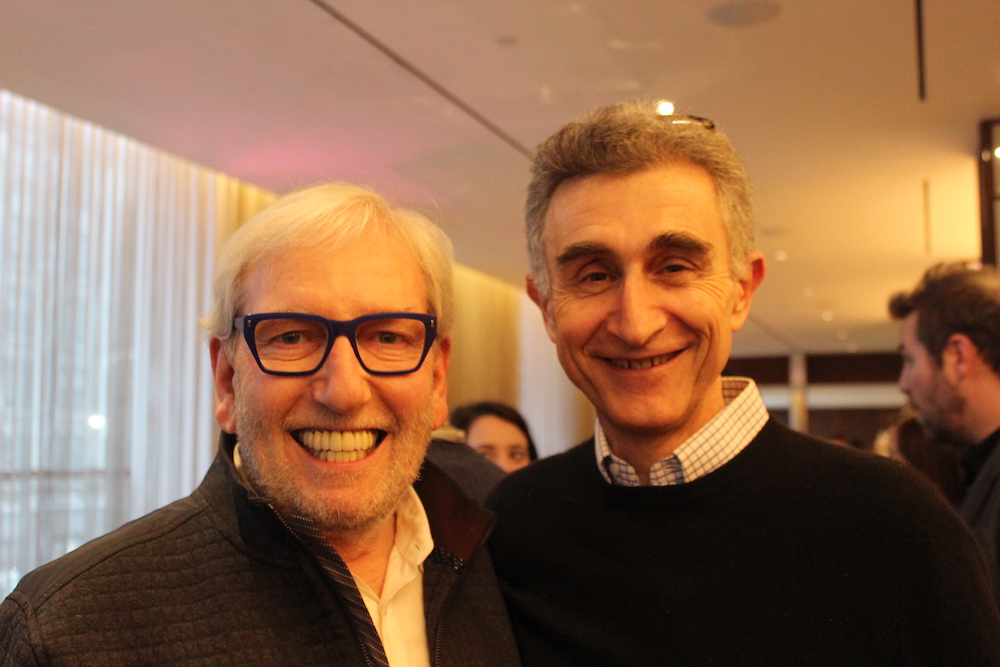
Jean-Jacques Quinsac of Le Sélect Bistro with Michel Gassier of Château de Nages.
The gentleman vigneron from Costières de Nîmes, Michel Gassier, was in Toronto last week promoting the wines of his family estate, Château de Nages. Monsieur Gassier presided over a lunch organized by his importing agent, Profile Wine Group, at Café Boulud at the Four Seasons Hotel. The lunch, which featured wines from both the JT and Vieilles Vignes labels, was auspicious in part because of the presence of Profile’s new On Premise Sales Manager, Drew Walker, who had until very recently served as Café Boulud’s Wine Director since its opening in 2012. We could all be assured that the wines were going to be poured properly as, of course, they were.
Michel Gassier is involved in a number of projects and labels in the Rhône Valley, but on this day the focus of attention were the wines made at the family estate where he is the fourth generation to farm it. (The fifth generation, in the form of his son Nicolas, was also present.) Gassier has been a key figure in the elevation of the reputation of the Costières de Nîmes appellation, bringing it from a source of bulk wines to an increasingly recognized source of fine, estate driven, wines. Gassier explains the flavour profile of the Château de Nages wines, and those of the region in general are partly driven by the cooling influences of higher elevations and closer proximity to the sea than the bulk of the Southern Rhône regions to its north and west.
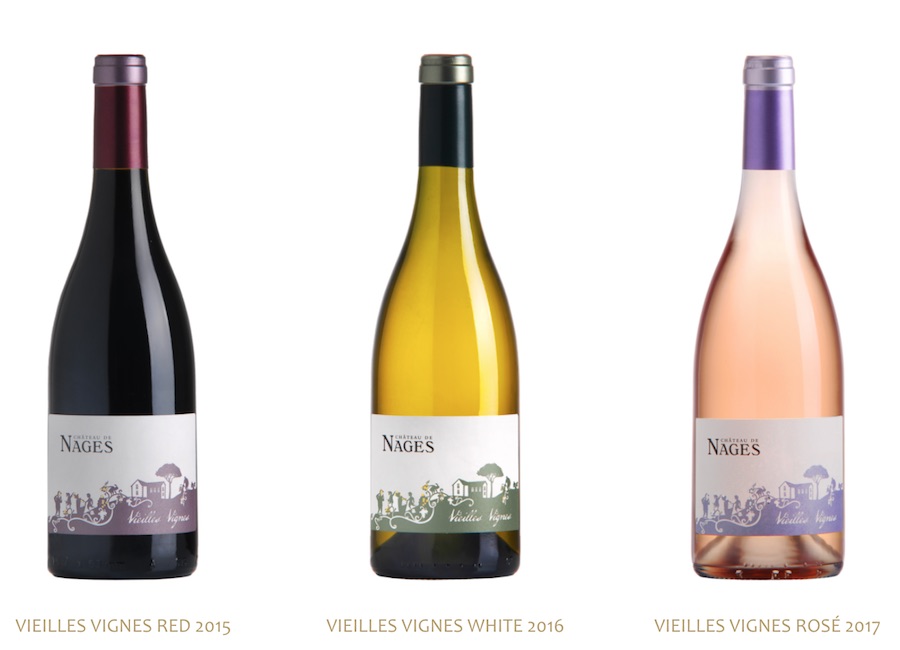
Wine is not made by terroir alone, and part of Gassier’s charm and skill as an ambassador of his brand is his openness on technique. He explained that in his quest to make wines “full of fruit that retain their acidity”, over the past 20 years he has moved to natural yeasts and used less and less new oak, and less sulfur, eschewing it entirely in his 2017 reds. “Oenology is damage control,” he said half joking, then more seriously, “To make a wine that is true to your place, you must remove your insurance.” On the subject of sulfur, he explained he adds minimal amounts, but only at the end of vinification. “If I could control transportation, I wouldn’t use any,” he said, explaining that he could control the conditions in his cellar, but feared factors like temperature variation might render his wines unstable on their way to market.
For his white wines, Gassier explained, he increasingly favours larger format barrels, using older ones and leaving the wines on their lees for up to 10 months to a year. “The bigger, older barrels are better for the lees,” he explained, “because they can make the wines reductive, but the wood in the barrels provides micro-oxygen to counter this.” Both the Vieilles Vignes and the JT White seemed to reflect this with a wonderful balance of richly concentrated, but lifted, fruit and fresh acidity. For his reds, Gassier, continues his path towards minimal intervention, using less and less new oak (“almost none in the Vieilles Vignes”) and moving towards whole cluster fermentation. He is pleased where his wines are heading, but added a note of caution, “It’s so hard to build a brand, and so easy to bring it down.”

Here are the wines we tasted. Technical sheets and more information can be easily found at chateaudeneages.com/en/wine. All except the 2016 Vieille Vignes White are on their way to the LCBO’s Vintages program, stay tuned for more on these wines as they roll out. I recommend them all and I would buy and very happily share any of these wines with people I like.
Vieilles Vignes Rose 2016 – $19.95 Vintages 496919 – 2017 Vintages release August 18, 2018
This was served as an aperitif, which is how I would serve it as it’s on the more white wine end of the rosé spectrum. It could go with hors d’ouvres, or on its own during a stroll through a summer garden. It’s bright and minerally, with strawberry and the note I sometimes call “geranium” but is probably closer to Grenadine or pomegranate.
Vieilles Vignes White 2016 – $19.95 N/A in Vintages – consignment : $22.95
Look for this label on wine lists (where I hope it won’t be marked up too much, because it performs far higher than its price). It’s a real Rhône white blend with Clairette, Grenache Blanc, Roussanne , Viogner and Bourboulenc, and it delivers that mellow yellow, full round fruit Rhône experience with a terrific freshness and elegance.
Vieilles Vignes Red 2015 – $19.95 Vintages 40964 – release March 17, 2018
“Deep but light,” reads my admittedly nonsensical note. And yet it’s completely true and could well be a theme for all the Château de Nages wines. There’s deep concentration of purple fruit that’s clear and clean on the palate, and bit of garrigue and acetone on the nose that seasons it all up. This perfectly balanced wine could easily go up against a Southern Rhône from some of the more prestigious AOC’s that cost twice as much or more.
JT White 2015 – $26.95 Vintages 485854 – release June 23, 2018
The JT White is driven by Rousanne and evened out by Viogner and Grenache Blanc, and exhibits a richness that Gassier attributes to its long time on the lees. I don’t know how many $26 (Canadian!) wines Robert Parker gives a 93 point score to, but I don’t fault him as I can see why he would. It’s got citrus and stone fruits, a clean and lean elegance, and freshness that brings water to the mouth. While I do know they exist, there can’t be very many ways to have this much fun for under $30.
JT Red 2014 – $25.95 Vintages 736876 – release March 3, 2018
Is a wine aromatic, if the aroma is violets? Or does that make it floral? Or are violets, used regularly in confectionery, really more akin to fruit anyway? I’m not sure, but I like that characteristic a lot in this Côte-Rôtie inspired, Syrah driven, take on Northern Rhône, that is co-fermented with a dash of Viogner. Gassier explained that it’s actually the Viogner that lends the wine, two thirds of which was fermented simply in concrete vats, a little extra tannic structure. In contrast to the Vieilles Vignes, the JT Red is more “light but deep”. It’s all very good.

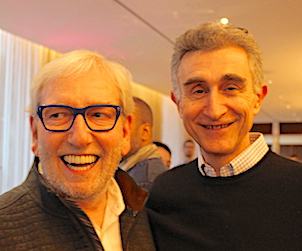

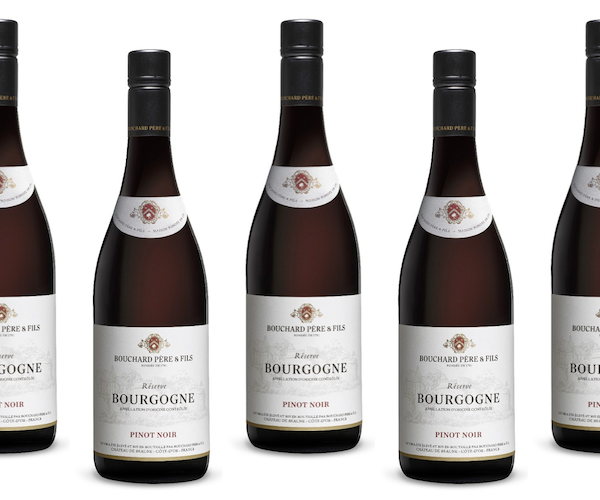

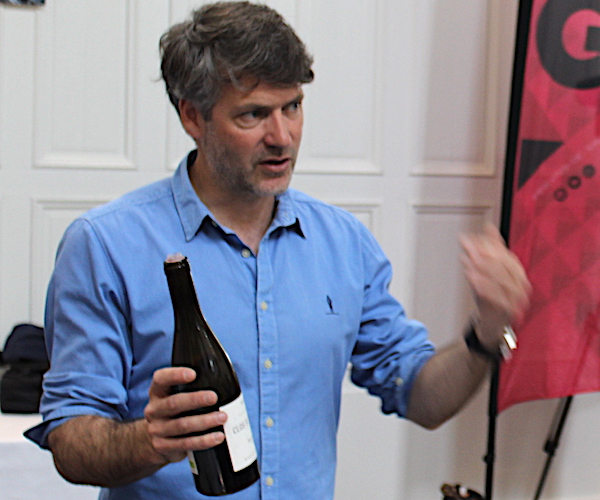


So pleasing to read this article which captures the spirit of this winery and the wonderful people who are part of it. Thanks
Avec plaisir! And exactly, from beautiful people beautiful wines.